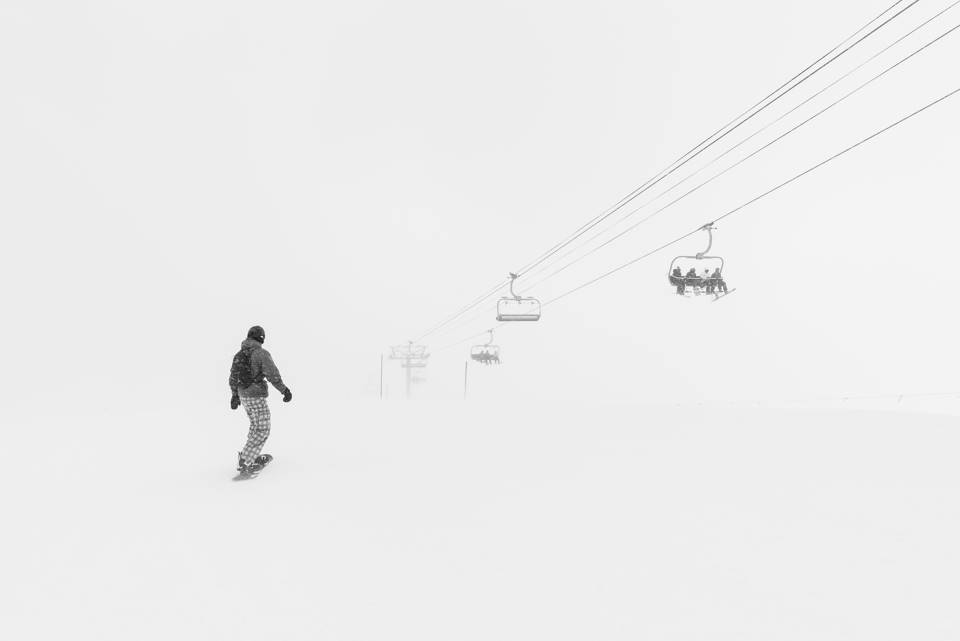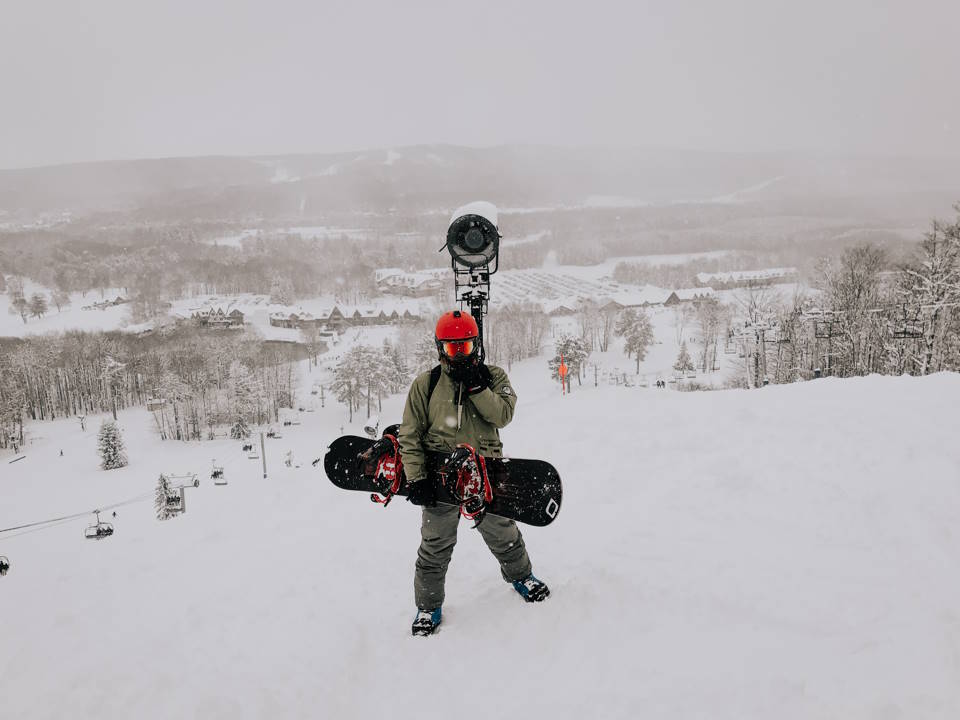Are you a beginner in the world of snowboarding? Or maybe you’re looking to improve your skills on the slopes? In this blog post, we will cover some essential techniques to help you become a more confident and controlled snowboarder. From mastering your stance and balance to effectively using your back foot to brake, we’ll provide you with valuable tips and strategies to enhance your snowboarding abilities. By the end of this post, you’ll have the knowledge and skills to perform controlled turns and control your speed through edging, ensuring a safer and more enjoyable experience on the mountain. Let’s dive in!
Proper Stance And Balance
When it comes to skiing or snowboarding, there’s one thing that is absolutely crucial – maintaining a proper stance and balance. Whether you’re a beginner or a seasoned pro, this is a fundamental skill that can make or break your performance on the slopes.
First and foremost, it’s important to have the right equipment. Make sure your boots are properly fitted and your bindings are adjusted to the correct settings. This will ensure that you have the stability and control you need to maintain a solid stance.
- Foot Position: When standing on your board or skis, your feet should be shoulder-width apart. This will give you a solid base and help you maintain balance. Keep your knees slightly bent and your weight evenly distributed between the balls of your feet and your heels.
- Upper Body: Your upper body plays a significant role in maintaining balance. Keep your core engaged and your chest up, while also relaxing your arms. Avoid leaning too far forward or backward, as this can throw off your balance.
- Eyes Forward: Where you look can impact your balance. Keep your eyes focused on where you want to go, rather than looking down at your feet. This will help you anticipate changes in terrain and stay balanced.
| Tips for Achieving Proper Stance and Balance |
|---|
| 1. Practice balancing exercises off the slopes, such as standing on one leg or using a balance board. This will help strengthen your core and improve your overall stability. |
| 2. Take the time to warm up and stretch before hitting the slopes. This will help prepare your muscles and joints for the physical demands of skiing or snowboarding. |
| 3. If you’re a beginner, consider taking a lesson from a qualified instructor. They can provide valuable tips and guidance on achieving and maintaining proper stance and balance. |
Remember, maintaining a proper stance and balance is essential for both your safety and enjoyment on the slopes. With practice and attention to detail, you’ll soon be carving up the mountain with confidence!
Controlling Speed Through Edging
Have you ever found yourself flying down the slopes, picking up speed faster than you can say “Jack Frost”? Well, my friend, you are not alone. Speed control is a common challenge for many snowboarders, especially beginners. But fear not, for I have a little trick up my sleeve that will help you regain control and conquer the mountains with grace. It’s called edging, and trust me, it’s a game-changer.
Picture this: you’re cruising down the mountain, the wind gently kissing your cheeks, and suddenly, you realize you’re going way too fast. Panic sets in, and you start to think about all the possible collisions and wipeouts that lie ahead. Your heart is pounding, and your mind is racing. But wait, there’s a way out of this snowstorm of anxiety, and it’s through the power of edging.
Edging is a technique where you use the edges of your snowboard to control your speed and direction. Think of it as the brakes on your board. By shifting your weight and applying pressure on the edges, you can slow down and maintain a comfortable pace. It’s like a dance between you and the mountain, where you lead with your moves and the mountain follows your lead.
Now, let’s break it down further. When you want to slow down, shift your weight slightly forward and lean towards the nose of your board. This will engage the front edge of your snowboard and create friction against the snow, gradually bringing you to a stop. It’s like tapping your foot on the brakes, but instead, you’re tapping the edge of your board.
Similarly, if you want to pick up speed, you can shift your weight back and put more pressure on your back foot. This will engage the tail edge of your board and allow you to glide effortlessly down the slopes. It’s like putting a little gas in your tank, giving you the freedom to zoom down the mountain.
- Shift your weight forward to slow down
- Shift your weight back to speed up
Now, you might be wondering, how do I find the sweet spot between going too fast and going too slow? Well, my snow-loving friend, practice makes perfect. Start by finding a gentle slope where you can experiment with your edging technique. Take it slow at first, getting a feel for how your board responds to your weight shifts. As you gain confidence, gradually increase your speed and challenge yourself with steeper slopes.
| PRO TIP: | Remember to always keep your knees bent and your body relaxed. Tensing up will only hinder your control and make it harder to execute those smooth turns. |
|---|
So, next time you find yourself hurtling down the mountainside, remember the power of edging. It’s your secret weapon against speed demons and a key technique in your snowboarding arsenal. Embrace the dance between you and the mountain, and let your feet guide you to victory. Happy shredding!
Using The Back Foot To Brake
Winter is here, and that means it’s time to hit the slopes! Whether you’re a seasoned snowboarder or a beginner trying to find your footing, mastering the art of braking is crucial in keeping yourself safe on the slopes. While there are several ways to slow down and stop on a snowboard, one of the most effective techniques is using the back foot to brake.
When it comes to snowboarding, balance is key. Before we dive into the technique of using the back foot to brake, let’s take a moment to discuss the importance of proper stance and balance. Maintaining a proper stance on your snowboard is essential for stability and control. Your feet should be shoulder-width apart, with your knees slightly bent and your weight evenly distributed.
Now, back to the main topic – using the back foot to brake. This technique involves exerting pressure on the back foot to slow down and come to a stop. To do this, shift your weight onto your back foot by leaning back slightly. Make sure to keep your knees bent and your upper body relaxed. As you lean back and apply pressure to your back foot, you’ll notice your speed decreasing and your control increasing.
| Here are a few key points to remember when using the back foot to brake: |
|---|
|
Mastering the technique of using the back foot to brake takes practice and patience. It’s important not to rely too heavily on this method, as it can put extra strain on your back leg and hinder your overall control. As you become more comfortable with the technique, you can start experimenting with other braking methods, such as using both feet or engaging your edges.
Performing Controlled Turns
One of the most thrilling parts of snowboarding is executing controlled turns down the slopes. It’s a skill that not only adds style to your riding but also enhances your overall performance on the mountain. Whether you’re a beginner or an experienced rider looking to fine-tune your technique, mastering controlled turns is essential. So, grab your board, buckle up your boots, and let’s delve into the world of maneuvering through turns with ease and precision.
When it comes to performing controlled turns, weight distribution plays a crucial role. To initiate a turn, focus on shifting your weight from your front foot to your back foot as you approach the desired direction. This transfer of weight allows the board’s nose to smoothly redirect, enabling you to carve through the snow effortlessly. Remember, maintaining a balanced and centered stance is key throughout the entire turn.
To further enhance your controlled turns, edging is the secret ingredient. Edging refers to the angle at which you tilt your board’s edges into the snow. By engaging your edges, you increase the board’s grip on the snow, allowing for greater control and stability during turns. Experiment with different degrees of edging to find the sweet spot that suits your riding style and the terrain you’re conquering.
- Keep your upper body facing downhill and aligned with your board.
- Use your arms for balance, but avoid excessive arm movements that may throw off your stability.
- As you approach the turn, bend your knees and lower your center of gravity, enhancing your control and responsiveness.
Successfully performing controlled turns requires practice and a deep understanding of your board’s capabilities. Start with gentle slopes and gradually progress to steeper terrain as your confidence builds. Remember, Rome wasn’t built in a day, and neither is mastering controlled turns. Embrace the challenge, enjoy the ride, and soon enough, you’ll be carving like a pro through every twist and turn the mountain has to offer.
| Benefits of controlled turns: |
|---|
|








